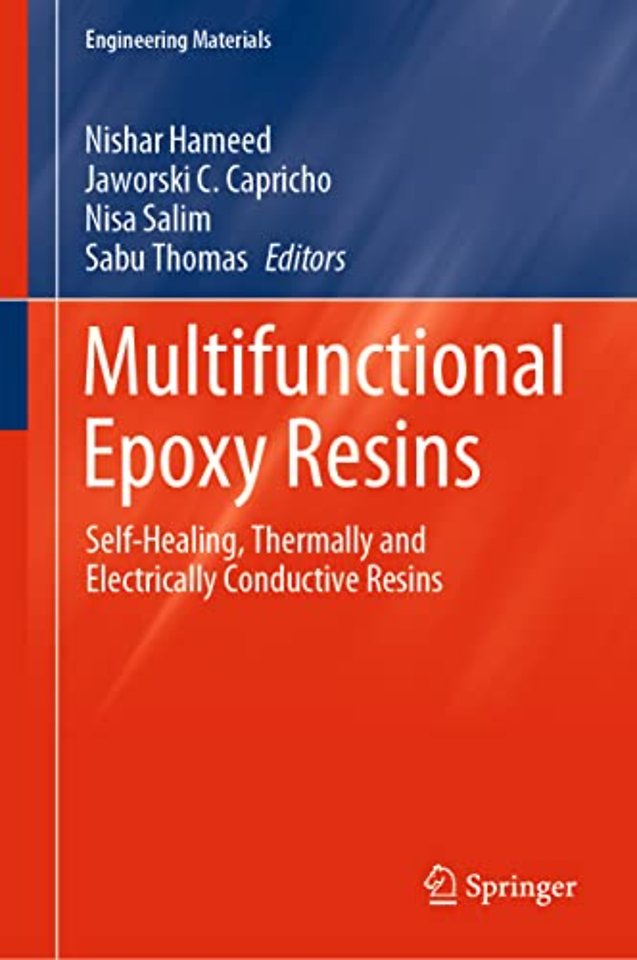<p>Chapter 1 - Introduction to multifunctional epoxy resins – fundamentals, state of the art and challenges.- Part 1- Self-healing resins.- Chapter 2 - Basics of self-healing epoxy systems General concepts, behavior and mechanism.- Chapter 3 - Mechanism of extrinsic and intrinsic self-healing in polymer systems.- Chapter 4 - Synthetic design of self-healing epoxy systems.-Chapter 5 - State of art in intrinsic self-healing epoxy networks (advantages, issues and outlook).- Chapter 6 - Epoxy based corrosion resistant and self-healing coatings.- Chapter 7 - Self-healing epoxy resin with multi stimuli-responsive behavior.- Chapter 8 - Bioinspired self-healing epoxy resins.- Chapter 9 - Modelling and Simulation of self-healing systems.- Part 2- Shape memory resins.- Chapter 10 - Basics of shape memory systems General concepts, behavior and mechanism).- Chapter 11 - Synthetic approaches of shape memory epoxy systems.- Chapter 12 - Properties and characterization of shape memory resins.- Chapter 13 - Modelling and Simulation in shape memory systems.- Chapter 14 - Applications of shape memory epoxy systems.- Part 3 - Thermally conductive resin systems.- Chapter 15 - Fundamentals of thermal conductivity in polymer network.- Chapter 16 - Imparting thermal conductivity in epoxy: Approaches and mechanism.- Chapter 17 - Modelling, simulation and machine learning in thermally conductive epoxy materials.- Chapter 18 - Applications of thermally conductive resins.- Part 4 – Electrically conductive epoxy resins.- Chapter 19 - Fundamentals of electrical conductivity in polymers.- Chapter 20 - Imparting electrical conductivity in epoxy: Approaches and mechanism.- Chapter 21 - Modelling, simulation and machine learning in electrically conductive epoxy materials.-Chapter 22 - Applications of electrically conductive epoxy resins.</p>
<p> </p><br>

